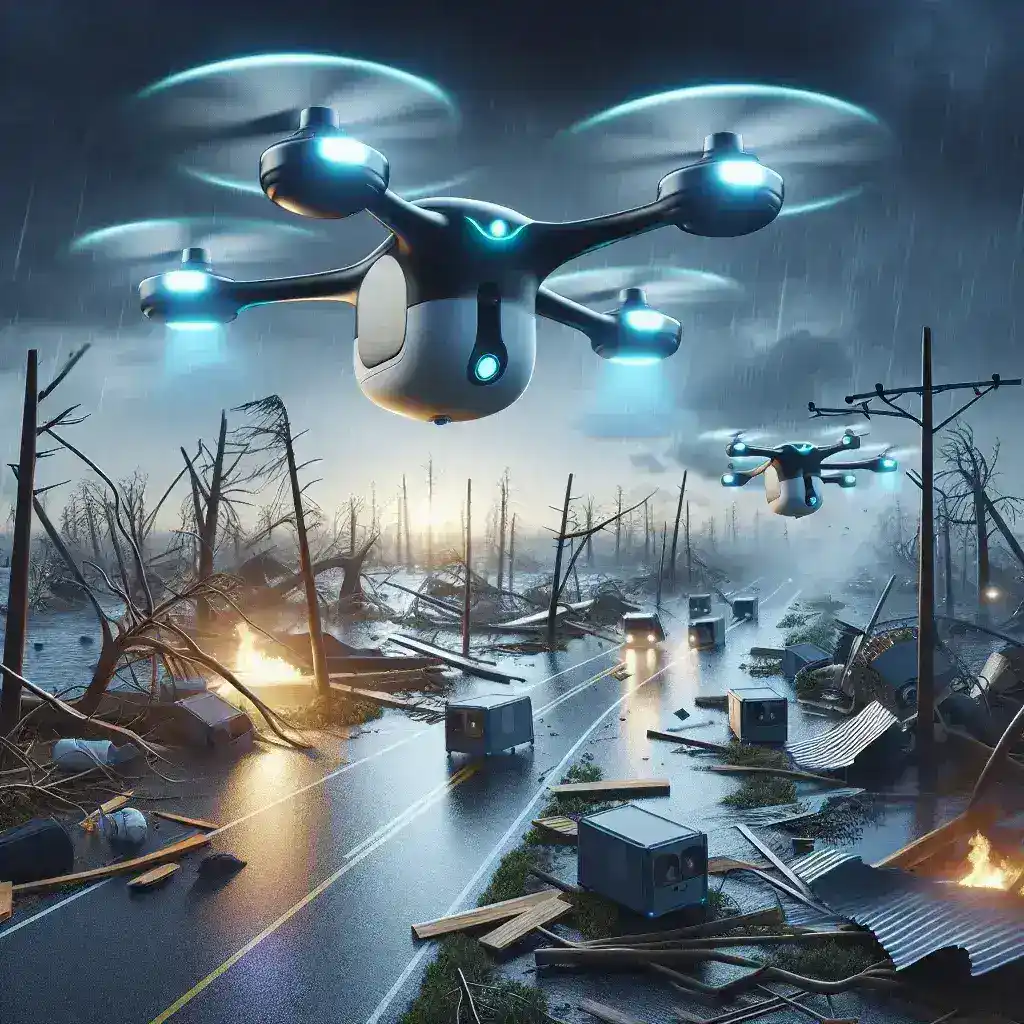Introduction
In recent years, the impact of hurricanes has become increasingly devastating, prompting a dire need for innovative solutions in disaster management. The application of AI powered drones, equipped with smart sensors, is transforming the way we approach disaster response in hurricane zones. This article delves into the intricacies of this technology, its historical context, future implications, and the pros and cons associated with its integration in disaster scenarios.
Historical Context of Hurricane Disasters
Hurricanes have wreaked havoc across various regions, from the Atlantic coasts of the United States to the Caribbean islands. Each year, they bring destruction, displacing families, demolishing infrastructures, and leading to tragic loss of life. The historical responses to these disasters have often been inadequate, relying heavily on human intervention and traditional methods of assessment. However, as technology has evolved, so has our capability to respond effectively to such emergencies.
The Emergence of Drones in Disaster Management
The utilization of drones in disaster management began to gain traction in the early 2010s. Initially, these unmanned aerial vehicles (UAVs) were primarily employed for reconnaissance and aerial photography. As technology advanced, the incorporation of AI and smart sensors enabled drones to collect and analyze data in real-time, significantly enhancing their utility in disaster-stricken areas.
How AI Powered Drones Work
AI powered drones are equipped with sophisticated algorithms that allow them to process data and make decisions autonomously. This technology enables drones to:
- Navigate effectively: Drones can map their surroundings using GPS and visual recognition, allowing them to traverse challenging terrains.
- Collect data: Equipped with various sensors, drones can gather information on weather conditions, structural integrity, and human presence.
- Analyze data in real-time: AI algorithms enable drones to interpret the data they collect, providing valuable insights to disaster response teams.
Deployment in Hurricane Disaster Zones
When a hurricane strikes, rapid assessment of the affected areas is crucial. AI powered drones can be deployed swiftly to evaluate damage, locate survivors, and monitor changing weather conditions. For instance, after Hurricane Harvey in 2017, drone technology was instrumental in assessing flood levels, allowing emergency services to prioritize their responses effectively.
Examples of AI Powered Drones in Action
Several organizations and agencies have begun using AI powered drones equipped with smart sensors in real-world scenarios:
- Federal Emergency Management Agency (FEMA): FEMA has partnered with drone technology firms to enhance their disaster response capabilities. Drones provided aerial imagery that assisted in damage assessment and resource allocation.
- Hurricane Dorian Response: During Hurricane Dorian, drones equipped with thermal imaging sensors were used to locate individuals stranded in flooded areas, an effort that significantly reduced rescue times.
Future Predictions
The future of AI powered drones in hurricane disaster zones looks promising. As technology continues to evolve, we can expect the following advancements:
- Improved AI Algorithms: Enhanced machine learning capabilities will allow drones to make more accurate predictions regarding weather patterns and disaster impact.
- Integration with Other Technologies: Drones will likely work in conjunction with other technologies, such as IoT devices, to create a comprehensive disaster management system.
- Regulatory Developments: As the use of drones becomes more prevalent, regulations will evolve, ensuring safety while maximizing their potential in disaster response.
Pros and Cons of Using AI Powered Drones
Pros
- Rapid Assessment: Drones can quickly gather information from areas that are otherwise inaccessible.
- Cost-Effective: Utilizing drones can reduce the costs associated with traditional assessment methods.
- Enhanced Safety: Drones can operate in dangerous conditions, minimizing risks to human responders.
Cons
- Privacy Concerns: The use of drones raises questions regarding privacy and surveillance in affected communities.
- Technical Limitations: Drones are subject to battery life constraints and adverse weather conditions that can hinder their effectiveness.
- Regulatory Hurdles: The regulatory landscape surrounding drone use is still evolving, which can delay deployment.
Real-Life Impact on Communities
The implementation of AI powered drones in hurricane disaster zones has had a notable impact on communities. For example, in Puerto Rico following Hurricane Maria, aerial assessments provided by drones helped officials prioritize recovery efforts, enabling them to restore power and access to clean water more efficiently.
Cultural Relevance and Community Engagement
Engaging local communities in the deployment of drone technology is essential. Communities that are informed about the technology and its benefits are more likely to support its use in disaster situations. Educational initiatives can foster a better understanding and acceptance of AI powered drones, ensuring their effective integration into disaster management strategies.
Conclusion
As we continue to witness the devastating impacts of hurricanes, the need for innovative solutions becomes ever more pressing. AI powered drones equipped with smart sensors represent a significant step forward in disaster management. By enhancing our ability to assess damage, locate survivors, and respond efficiently, these technologies have the potential to save lives and rebuild communities more effectively. As we look towards the future, embracing and refining this technology will be crucial in navigating the challenges posed by natural disasters.
Call to Action
To stay informed about the latest developments in AI powered drones and their applications in disaster management, consider subscribing to relevant newsletters or following organizations dedicated to technological advancements in emergency response.

